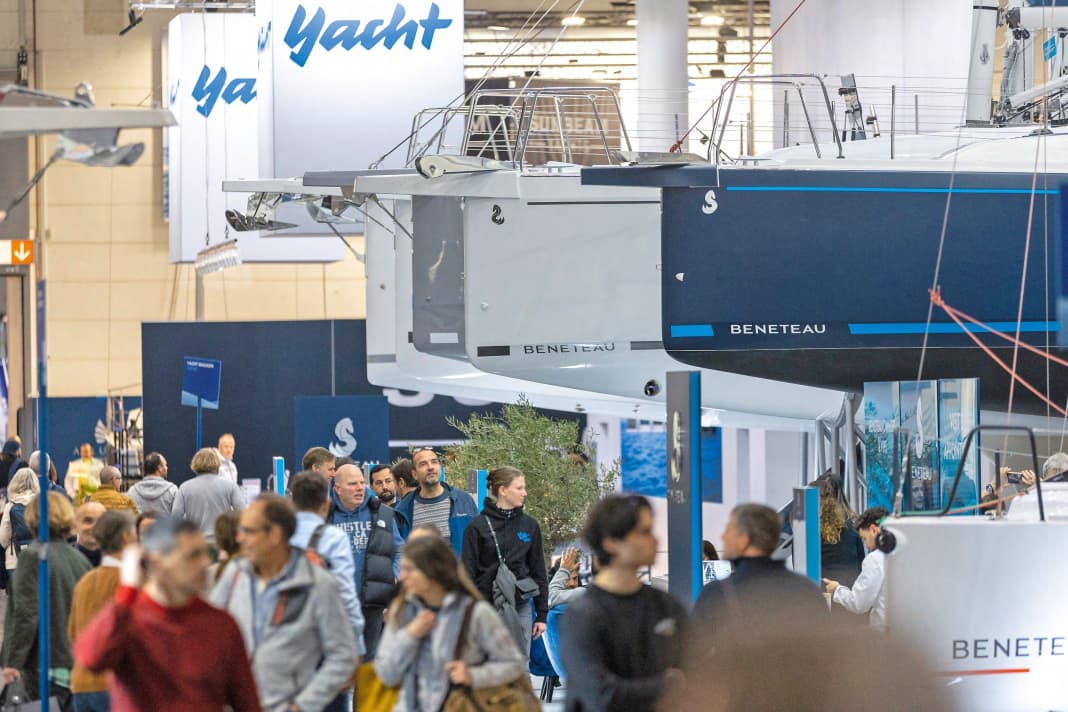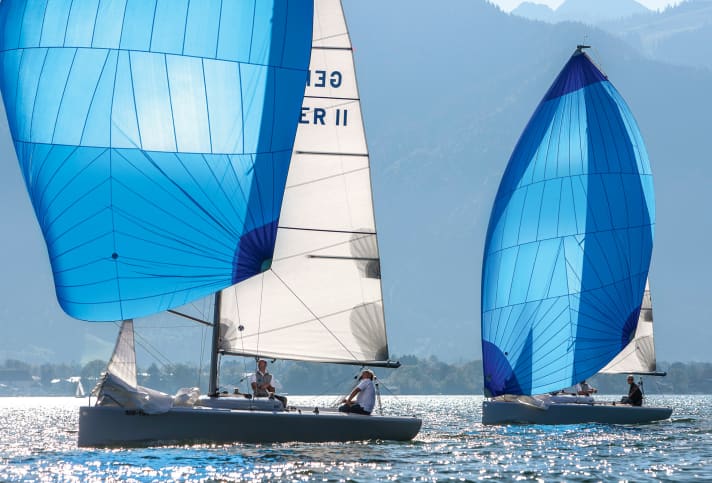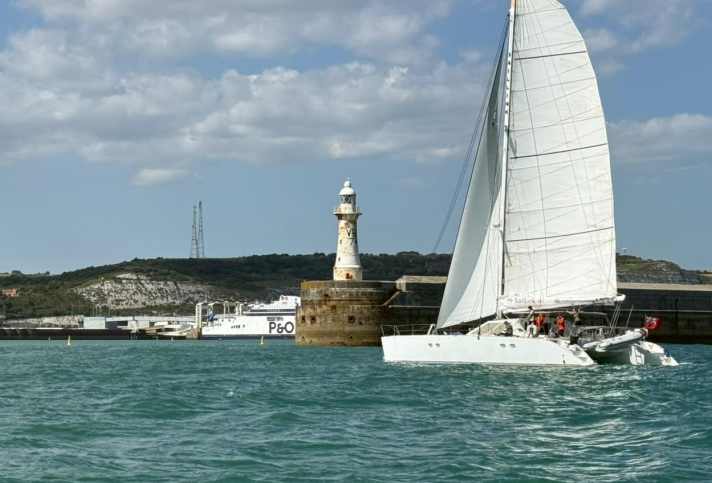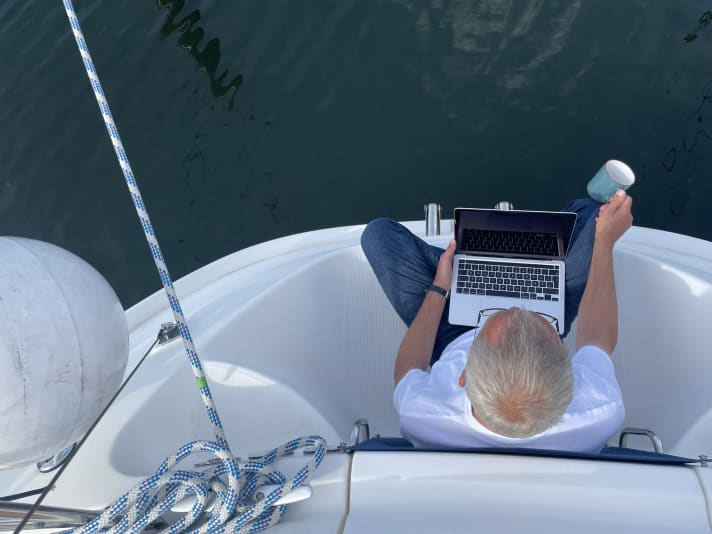Opinion: Price explosion - why you need to win the lottery to buy a new yacht
YACHT-Redaktion
· 20.01.2024


Dear readers,
I love boat shows. That's probably true for 98 per cent of all sailors. And even if the weather is better in Cannes, La Rochelle, Ellös or Southampton at the in-water shows in summer, the sea is closer and the boats are rocking instead of resting quietly on their hulls: I love boot Düsseldorf.
They have achieved on the Rhine what they failed to do on the Thames or Seine: to establish the world's largest water sports exhibition. We have it in our own country and sometimes no longer really recognise its uniqueness. Yet there are sailors who travel from Japan or Brazil especially to visit. A trade journalist from the USA, who experienced boot for the first time a few years ago, couldn't believe the sheer scale of it, because everything that is "bigger than life" should actually be at home in the States.
If they hadn't been around for half a century, they would have to be invented immediately. Especially in winter, just one month after the shortest day of the year, it's good to think about going to sea in the dry, on board the latest models the market has to offer.
Nevertheless, I travelled to the Rhine yesterday with mixed feelings. Because something has changed in yacht building.
I am not referring to the noticeable decline in new developments compared to previous years, especially in Hall 16, although some shipyards that had recently taken a break are back - such as the Hanseyachts Group from Greifswald with the Moody 48 DS and the Hanse 410 or X-Yachts with the XC-47 and the X 4.9 Mark II. Nevertheless, a general reticence can be felt that is not only thinning out the sailing boat halls. And it is homemade.
In 2024, for example, Beneteau, the world's largest sports boat shipyard, will not be presenting a new design for the first time since I have been following the industry - and in the year of its 140th anniversary. Okay, that's not a milestone anniversary, but it's actually an occasion for something groundbreaking. Until now, the French company has always set itself apart from the competition in declining markets with a firework display of innovation. Now, however, the company, which has several production sites on the Bay of Biscay and in other countries, seems to be standing still.
The Oceanis 37.1 is - after all - a 2023 novelty coming to Düsseldorf, and also in the attractive eleven metre length segment. But that brings us to the second part of the problem: Beneteau is asking a whopping 215,990 euros for the 37.1 in the base price, with all too sparse equipment. If you order it as a first line with more sail area, plus Code Zero, gennaker, autopilot and navigation electronics, you'll be out of pocket in no time at all at 300,000 euros. D r e i h u n d e r t t a u s e !!! Ten years ago, the Oceanis 38 cost YACHT comfort equipment half.
And things are by no means getting better further up in the programme of large series manufacturers, where margins have always been more adequate. The new C46 from Bavaria, for example, is priced at 375,560 euros. If you want to equip it adequately, you can hardly avoid the extensive Ocean Pack, which costs an extra 147,920 euros. A C46 therefore represents the not-so-small fortune of half a million euros. By way of comparison: four years ago, when the shipyard in Giebelstadt was in turmoil, you could call the predecessor Cruiser 46 with the complete package your own for less than half the price with a little negotiating skill.
The C46 is bigger, more variable, higher quality, no question about it. And it sails really well, it doesn't feel like its performance has been artificially capped. But is it still a popular boat in XL format? Charter companies, who are undoubtedly experiencing a great demand for the new model, are in any case concerned about the resulting weekly prices and returns - and are finding it harder than ever to find owners for purchase charter models at these prices.
Dufour has raised its standards for the same reason. The boat builder, which like Beneteau, Bavaria, Hanse or Jeanneau offers ordinary cruising yachts, now sees itself as a high-end brand. It has re-labelled its models as "luxury yachts" - as if they were now competing with Grand Soleils, X-Yachts or Swans, which is not just a little far-fetched. The Dufour 32, which was only launched three years ago, was immediately dropped from the programme. The so-called 37 is actually not 33 feet long; the nameplate is probably intended to conceal the harsh initial price for uninformed potential buyers.
These are just examples and indications of a trend that could be documented more comprehensively. Pay attention to this when you visit the trade fair. Some shipyards, like car dealers, no longer put the purchase price on their exhibits, but instead the leasing rate, which in no way makes things more affordable.
It could be the beginning of a development that will make yachting as a whole so much more expensive that more and more sailors will be financially marginalised. Especially as harbour operators and service yards are also increasing prices, sometimes drastically, and adding to the price increase by imposing additional requirements. It has certainly never been cheap to run a boat privately, but it used to be reasonably affordable for hundreds of thousands of people. Now it takes an inheritance or a lottery win to buy even a normal-sized cruising yacht.
The shipyards are not solely responsible; we have all contributed to this. The fact that a 37-foot charter ship today must have a minimum of three double cabins and two bathrooms does not happen in a vacuum, but is a reflection of ordering behaviour. At 45 feet, four separate cabins and four bathrooms are the norm today - more than in the average home. On modern cruising cats, there seems to be no room for less than three open-air seating areas, all preferably fully shaded: one aft, one on the flybridge, the purpose of which has never been clear to me, and one in front of the saloon.
This longer-wider-higher is not available without additional cost, nor without additional weight. Nevertheless, the strategy, if you can call it that, somehow worked for a long time. Partly because manufacturers hardly dared to increase prices in the years following the financial and economic crisis of 2007/08. Now, however, the model is reaching its limits: rising labour, material and logistics costs as well as the eternal growth in the size of boats have led to an overall explosion in costs that even the purchasing power of higher earners can no longer keep up with. On the contrary: the majority of the potential target group is struggling with declining incomes in real terms due to inflation and interest rate trends.
This comparison shows just how blatant the development is: for the equivalent of an eleven-metre boat off the shelf, you could easily afford a Bentley Bentayga. It has absurd proportions, an appalling carbon footprint and an image that places owners somewhere between pompous landlords, nouveau riche oligarchs and football stars addicted to publicity. But there's no denying that it really is premium; it doesn't just simulate this with its price tag.
Of course, the shipyards are not making their boats more expensive out of malice or greed. They cannot do business any other way. With the exception of the companies that build multihulls, most yacht manufacturers barely have enough water under their keel; many have been losing money for years and are only supported by investors. This gives the whole thing a frightening inevitability.
But why does nobody dare to seriously question the status quo, to break out of the growth compulsion that is increasingly distancing yachts from the majority of their actual target group? This is certainly not possible with ever larger, more complex boats. Perhaps it can be achieved through an intelligent form of reduction, through genuine innovation, through new sales channels - and of course only if sailors are enthusiastic about it. Hanseyachts once tried something like this with the Varianta 37 and 44, without resounding success. Bavaria had the 9.7 Easy in its programme as an affordable entry-level model, but it didn't have a long life either. So is it not possible - or is it possible, just differently?
I'm afraid that we won't see the solution at this boot Düsseldorf, but I hope we will in a year or two. In the meantime, the problem will be on show. I don't want that to spoil your enjoyment of the trade fair; I like being on boats that I will never be able to afford far too much. I just want to prepare you for the fact that something has shifted in the market that cannot be good for the sport. In my opinion, the dream of sailing must remain affordable. This applies not only, but also to the market for new yachts, which are always the main attraction at every water sports fair. So it's high time to rethink boat building, not just bigger and bigger!
Jochen Rieker,
Publisher YACHT
PS: Anyone who wants to take a look behind the scenes of"Europe's yacht of the year" - the sailing Oscars - is urgently recommended. new podcast episode of the YACHT sailing podcast.
Newsletter: YACHT-Woche
Der Yacht Newsletter fasst die wichtigsten Themen der Woche zusammen, alle Top-Themen kompakt und direkt in deiner Mail-Box. Einfach anmelden:
Click to see through
The week in pictures:






Recommended reading from the editorial team:

Ocean Race Europe
Kid gloves off - four protests in Genoa

The kid gloves have come off in the Ocean Race Europe: The International Jury hears four protests at the stage stop in Genoa. Including one from Team Malizia.
YACHT photo competition 2025
Take part and win! We want your best photo!

The YACHT photo competition is entering the next round. Take part and capture your favourite sailing moments of this season - it's worth it!
Ocean Race Europe
Baci from "Bogi" to home win, mistakes set Malizia back

Italian dream finale on stage four of the Ocean Race Europe: Team Allagrande Mapei Racing celebrates the hoped-for home victory. Team Malizia is still fighting.
Peter Gast Schiffahrtsregatta 2025
Classics triumph at the 42nd edition of the race

At the 42nd Peter Gast Regatta, classic yachts surprisingly prevailed against modern regatta ships. The 102 participating boats benefited from perfect sailing conditions on the 30 nautical mile course from Schleimünde to Ærøskøbing.
European Yacht Of The Year 2026
The nominees for European Yacht of the Year

After a tough slump, the boating industry is taking off again. This can be seen in the election for European Yacht of the Year, in which 23 candidates are competing.
Ocean Race Europe
"It's not over yet!"

Rosalin Kuiper reports on the Ocean Race Europe in the Race Blog. After the recent thrilling top duel with "Biotherm", she says: "It's not over yet."
Manoeuvring
Harbour manoeuvres: 9 mooring variants for single-handed sailors

What should you do if you suddenly have to manoeuvre single-handed on your usual mooring and the wind is blowing hard? Stay calm - with these tricks you can master any manoeuvre!
"Vasa"
The biggest misconstruction of modern times

The Swedish "Vasa" was supposed to dominate the Baltic region in 1628, but sank on its maiden voyage. The maritime disaster became a success story
Bucket list
Every sailor should have done this once

Ride a gennaker, dare to sail at night, sail a beach cat for once in your life or take off on foils. A bucket list with ten ideas for sailors.
English Channel
First sailing ferry commutes between England and France

Since April 2025, it has been possible to cross the English Channel by sailing ferry. With its 17-metre catamaran, SailLink offers an environmentally friendly alternative to the conventional ferry service between Dover and Boulogne-sur-Mer.
NOW NEW
The YACHT to your ears - the sailing podcast

Europe's biggest sailing magazine is now also available for your ears! The new sailing podcast sets sail every fortnight and takes you on a trip into the most diverse areas of sailing. The first two episodes are already available - be sure to listen in!
YACHT webinars
Beginner webinars for everyone. Register now!

On 2 November, we launched our extensive range of interesting online lectures on the most important topics relating to sailing. Let our experts get you in shape for the new season. In a series of webinars, we share practical knowledge and our experience on topics that concern beginners and experts alike
Newsletter: YACHT-Woche
Der Yacht Newsletter fasst die wichtigsten Themen der Woche zusammen, alle Top-Themen kompakt und direkt in deiner Mail-Box. Einfach anmelden:

